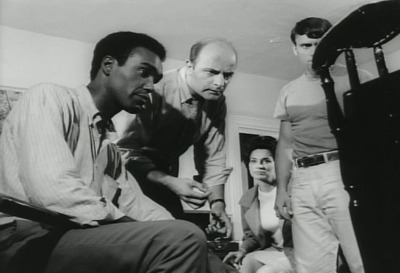One of the hundreds of things that annoys me about language teaching1 is the use of jargon to the exclusion of all else when explaining how something works in a relatively simple way. Sometimes it’s not all that simple, but what could happen if we take the approach of keeping things simple and explaining everything as we go? Perhaps people will stop saying that the alternatives to the status quo in language teaching in general and English language teaching in particular are unworkable.

With this in mind, I decided to write a book about Task-Based Language Teaching (TBLT) to demystify it and make it accessible to ordinary teachers who would like to try it but got put off it by the complexity and the density of the research literature. Then I put it off because my colleague in SLB Co-op, Neil McMillan, told me about his and Geoffrey Jordan’s plan for an online course to make TBLT a bit more viable. He then asked if I wanted to be a part of it. I jumped at the chance.
I’ve wanted to make TBLT less of a messy learning process since I had a messy learning process with it myself during my DipTESOL. It is with hindsight that I realised it really should not have been that way. If I had a mentor to guide me through the contradictory information regarding different task-based models (and there are some different ones, which I’ll look at below), and talk about how to sequence lessons and what the prerequisite work is before you even start teaching, I am sure that my stress levels would have been lower and my students might have had a couple of more straightforward lessons.
Generally speaking there are three main ‘task-based’ approaches.
1. The Nunan (2004) model, which uses tasks but really is just a Present-Practice-Produce lesson done as Produce-Practice-Present because the teacher has preset plans for focus on language items.
1a. The Willis & Willis (2007) model, which does pretty much the same as the Nunan model (in my opinion) but uses a task cycle and greater reflection but still with the focus on language items but advocating more focus on lexis.
2. The Ellis (2003) model, which mixes ‘real-world’ tasks with tasks that exist solely for pedagogy, using what Skehan (1998) calls “structure-oriented tasks” (Skehan, 1998. p. 122-123). Essentially, there will be tasks that are only there to induce use of certain grammar, vocabulary or functions. However, there is more room for Focus on Form (looking at language that learners have shown they need, rather than what the teacher presumes they need).
3. The Long (2014) model. The syllabus is created by needs analysis, and the typical language used to do it is sourced by an “analysis of discourse” (Long, 2014. p.??) Put simply, find out what learners need to do with the language and how it would normally be done. There is no looking at language just to shoehorn a language point into the lesson. Instead, there is only Focus on Form, again focusing on language learners have displayed a need for in their output (bits of speaking or writing that are not quite what would be considered an appropriate way to communicate within the group of people one intends to communicate with) or displayed a lack of understanding of in their input (i.e. bits of reading or listening that have not been understood).
SLB Co-op prefer the Long model, but acknowledge that it can be somewhat difficult for teachers without a university department full of applied linguists supporting them. This is why we are going to look at how we make TBLT workable in the real world.
The course, created by Neil McMillan, Geoffrey Jordan and I with guest contributions from Mike Long and Roger Gilabert, starts next year. To be a part of it you can find out more here.
References
Ellis, R. (2003) Task-based Language Learning and Teaching. Oxford: OUP.
Long, M. (2014). Second language acquisition and task-based language teaching. John Wiley & Sons.
Nunan, D. (2004) Task-Based Language Teaching. Cambridge: CUP.
Skehan, P. (1998). A Cognitive Approach to Language Learning. Oxford: OUP.
Willis, D. & Willis, J. (2007) Doing Task-Based Teaching. Oxford: OUP.